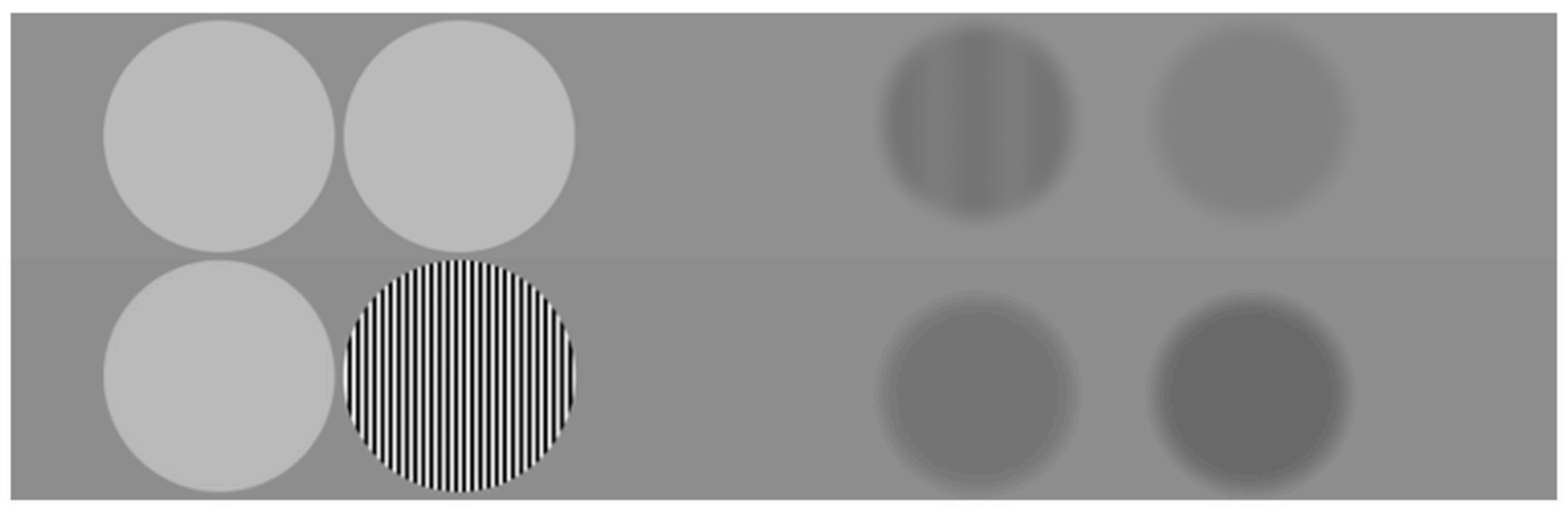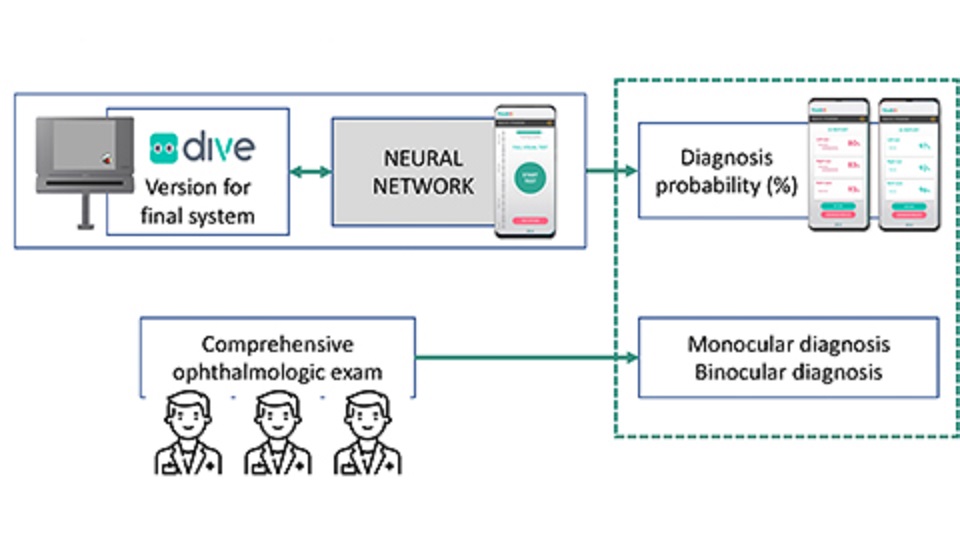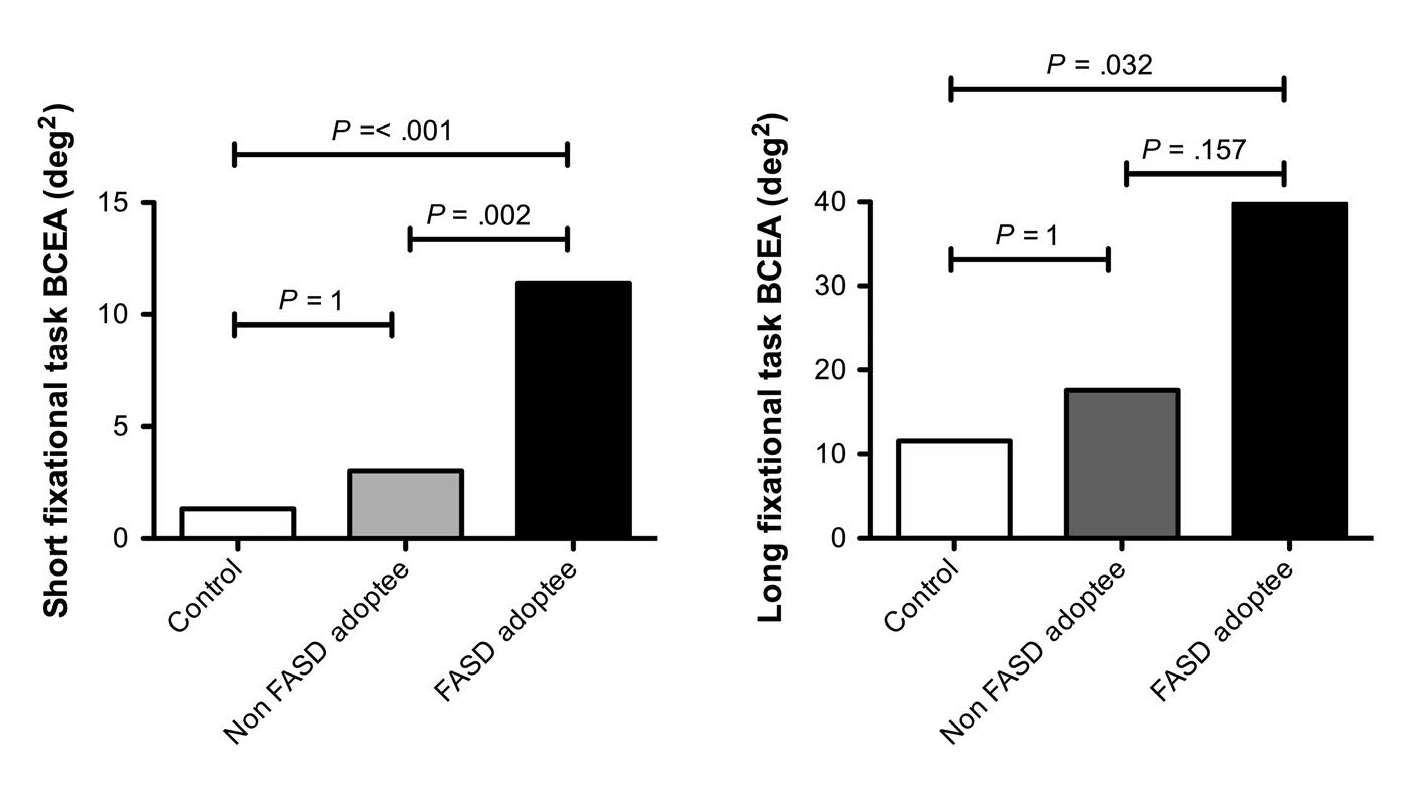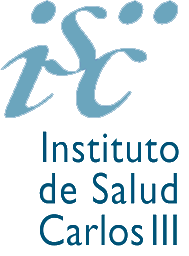Diagnosis of Visual Defects
We are creating an automatic tool for the diagnosis of visual defects in small children. The advances in eye tracking technology have opened up a whole new world of possibilities in this research area.
Learn more about the project here
Diagnosing visual defects is specially challenging when the patient is a baby or a small child. The difficulty to communicate with small children makes it impossible to apply techniques designed for adults, such as reading letters out loud, and the methods that are currently being used to diagnose them are imprecise and inefficient. However, early detection of visual defects can make a big difference in the quality of life and cognitive development of children. For that reason, we are collaborating in a multidisciplinary project with ophthalmologists from the Miguel Servet Hospital (Zaragoza, Spain) to create a tool that can help diagnose visual defects in small children accurately and systematically. Eye tracking technology allows us to detect where the patient is looking at with high accuracy and precision. Coupling this technology with smartly designed stimuli, we can perform several tests to evaluate the visual capacity of small children without the need for them to follow any specific instructions.
Publications
Deep learning-based keratoconus detection from Scheimpflug images
J. Casado-Moreno, B. Masia, N. Liu, L. Cui, A. Consejo
Biomedical Optics Express

Abstract: This study evaluates the effectiveness of deep learning techniques applied to raw Scheimpflug corneal images for keratoconus detection, with a particular focus on forme fruste (FF) keratoconus, which refers to preclinical cases. Using an original dataset of 22,750 images from 910 eyes, a deep learning model based on transfer learning with a pre-trained VGG16 architecture was trained, incorporating specific preprocessing steps and data augmentation strategies. The proposed approach achieved an overall accuracy of 90.70%, with a sensitivity of 80.57%, and a specificity of 80.56% for FF keratoconus classification, and an AUC of 0.89. For clinical keratoconus, the model demonstrated a sensitivity of 93.28%, a specificity of 99.40%, and an AUC of 1.00. These findings highlight the potential of leveraging raw Scheimpflug images in deep learning-based keratoconus detection, particularly for identifying early-stage structural changes that may not be apparent in conventional topographic assessments.
Development of oculomotor control throughout childhood: A multicenter and multiethnic study
Victoria Pueyo, Jason C. S. Yam, Teresa Perez-Roche, Victoria Balasanyan, Marta Ortin, Gerardo Garcia, Esther Prieto, Chau Pham, Diego Gutierrez, Olimpia Castillo, Belen Masia, Adrian Alejandre, Mohamed Bakkali, Marta Ciprés, Eduardo Esteban-Ibañez, Alvaro Fanlo-Zarazaga, Inmaculada Gonzalez, Ivan Z. K. Gutiérrez-Luna, Xian Pan, Juan Pinilla, María Romero-Sanz, Valeria Sanchez-huerto, Marina Vilella, Nguyen Xuan Tinh, Nguyen Xuan Hiep, XiuJuan Zhang, TrackAI Research Consortium
Journal of Vision 22(13), 2022

Abstract: Although steady fixation is a key aspect of a proper visual function, it is only subjectively assessed in young and uncooperative children. In the present study, we characterize the development of fixational behavior throughout childhood in a large group of healthy children 5 months of age and up, recruited in five geographically diverse sites. In order to do it, we examined 802 healthy children from April 2019 to February 2020. Their oculomotor behavior was analyzed by means of an automated digital system, based on eye-tracking technology. Oculomotor outcomes were gaze stability, fixation stability and duration of fixations (for both long and short fixational tasks), and saccadic reaction time. Ninety-nine percent of all recruited children were successfully examined. Fixational and saccadic performance improved with age throughout childhood, with more pronounced changes during the first 2 years of life. Gaze and fixation tended to be more stable with age (p < 0.001 for most the outcomes), and saccades tended to be faster. In a multivariate analysis, including age and ethnicity as independent variables and adjusting by data quality, age was related with most fixational outcomes. Our automated digital system and eye-tracking data allow us to quantitatively describe the development of oculomotor control during childhood, assess visual fixation and saccadic performance in children 5 months of age and up, and provide a normative reference of fixational outcomes for clinical practice.
Development of oculomotor control throughout childhood: A multicenter and multiethnic study
María Teresa Pérez Roche, Jason C. Yam, Hu Liu, Diego Gutierrez, Chau Pham, Victoria Balasanyan, Gerardo García, Mauricio Cedillo Ley, Sandra de Fernando, Marta Ortín, Victoria Pueyo, and on behalf of the TrackAI Research Consortium
Children 2023, 10(1), 87

Abstract: Visual assessment in preverbal children mostly relies on the preferential looking paradigm. It requires an experienced observer to interpret the child’s responses to a stimulus. DIVE (Device for an Integral Visual Examination) is a digital tool with an integrated eye tracker (ET) that lifts this requirement and automatizes this process. The aim of our study was to assess the development of two visual functions, visual acuity (VA) and contrast sensitivity (CS), with DIVE, in a large sample of children from 6 months to 14 years (y) of age, and to compare the results of preterm and full-term children. Participants were recruited in clinical settings from five countries. There were 2208 children tested, 609 of them were born preterm. Both VA and CS improved throughout childhood, with the maximum increase during the first 5 years of age. Gestational age, refractive error and age had an impact on VA results, while CS values were only influenced by age. With this study we report normative reference outcomes for VA and CS throughout childhood and validate the DIVE tests as a useful tool to measure basic visual functions in children.
Evaluation of Fixational Behavior throughout Life
Irene Altemir, Adrian Alejandre, Alvaro Fanlo-Zarazaga, Marta Ortin, Teresa Perez, Belen Masia, and Victoria Pueyo.
Brain Sciences, 12(1):19, 2022
Abstract: Background: To quantify development of gaze stability throughout life during short and long fixational tasks using eye tracking technology. Methods: Two hundred and fifty-nine participants aged between 5 months and 77 years were recruited along the study. All participants underwent a complete ophthalmological assessment. Fixational behavior during long and short fixational tasks was analyzed using a DIVE (Device for an Integral Visual Examination), a digital test assisted with eye tracking technology. The participants were divided into ten groups according to their age. Group 1, 0–2 years; group 2, 2–5 years; group 3, 5–10 years; group 4, 10–20 years; group 5, 20–30 years; group 6, 30–40 years; group 7, 40–50 years; group 8, 50–60 years; group 9, 60–70 years; and group 10, over 70 years. Results: Gaze stability, assessed by logBCEA (log-transformed bivariate contour ellipse area), improved with age from 5 months to 30 years (1.27 vs. 0.57 deg2 for long fixational task, 0.73 vs. −0.04 deg2 for short fixational task), while fixations tend to be longer (1.95 vs. 2.80 msec for long fixational tasks and 0.80 vs. 1.71 msec for short fixational tasks). All fixational outcomes worsened progressively from the fifth decade of life. Log-transformed bivariate contour ellipse area (0.79, 0.83, 0.91, 1.42 deg2 for long fixational task and 0.01, 0.18, 0.28, 0.44 deg2 for short fixational task, for group 7, 8, 9, and 10 respectively). Stimuli features may influence oculomotor performance, with smaller stimuli providing prolonged fixations. Conclusions: Fixational behavior can be accurately assessed from 5 months of age using a DIVE. We report normative data of gaze stability and duration of fixations for every age group. Currently available technology may increase the accuracy of our visual assessments at any age.
Age norms for grating acuity and contrast sensitivity in children using eye tracking technology
Eduardo Esteban-Ibañez, Teresa Perez-Roche, Ester Prieto, Olimpia Castillo, Alvaro Fanlo-Zarazaga, Adrian Alejandre, Diego Gutierrez, Marta Ortin, Victoria Pueyo
International Ophthalmology Vol. 42 (2022)
Abstract: Key messages: (i) Visual acuity is the most used method to assess visual function in children. Contrast sensitivity complements the information provided for visual acuity, but it is not commonly used in clinical practice. (ii) Digital devices are increasingly used as a method to evaluate visual function, due to multiple advantages. Testing with these devices can improve the evaluation of visual development in children from a few months of age. (iii) Visual acuity and contrast sensitivity tests, using eye tracking technology, are able to measure visual function in children across a wide range of ages, objectively, quickly and without need of an experienced examiner. Purpose: To report age-normative values for grating visual acuity and contrast sensitivity in healthy children using a digital device with eye tracking technology and to validate the grating acuity test.
Development of a system based on artificial intelligence to identify visual problems in children: study protocol of the TrackAI project
Victoria Pueyo, Teresa Pérez-Roche, Esther Prieto, Olimpia Castillo, Inmaculada Gonzalez, Adrian Alejandre, Xian Pan, Alvaro Fanlo-Zarazaga, Juan Pinilla, Jose Ignacio Echevarria, Diego Gutierrez, Irene Altemir, María Romero-Sanz, Marta Cipres, Marta Ortin, Belen Masia
British Medical Journal Open, Vol. 10(2), 2020

Abstract: Around 70% to 80% of the 19 million visually disabled children in the world are due to a preventable or curable disease, if detected early enough. Vision screening in childhood is an evidence-based and cost-effective way to detect visual disorders. However, current screening programmes face several limitations: training required to perform them efficiently, lack of accurate screening tools and poor collaboration from young children. Some of these limitations can be overcome by new digital tools. Implementing a system based on artificial intelligence systems avoid the challenge of interpreting visual outcomes. The objective of the TrackAI Project is to develop a system to identify children with visual disorders. The system will have two main components: a novel visual test implemented in a digital device, DIVE (Device for an Integral Visual Examination); and artificial intelligence algorithms that will run on a smartphone to analyse automatically the visual data gathered by DIVE.
Oculomotor deficits in children adopted from Eastern Europe
Victoria Pueyo, Olimpia Castillo, Inmaculada Gonzalez, Marta Ortin, Teresa Perez, Diego Gutierrez, Esther Prieto, Adrián Alejandre, Belen Masia
Acta Paediatrica, 2019

Abstract: We aim to assess oculomotor behaviour in children adopted from Eastern Europe, who are at high risk of maternal alcohol consumption. This cross‐sectional study included 29 adoptees and 29 age‐matched controls. All of them underwent a complete ophthalmological examination. Oculomotor control, including fixation and saccadic performance, was assessed using a DIVE device, with eye tracking technology. Anthropometric and facial measurements were obtained from all the adopted children, to identify features of foetal alcohol spectrum disorders (FASD). Fixational and saccadic outcomes were compared between groups, and the effect of adoption and FASD features quantified.

